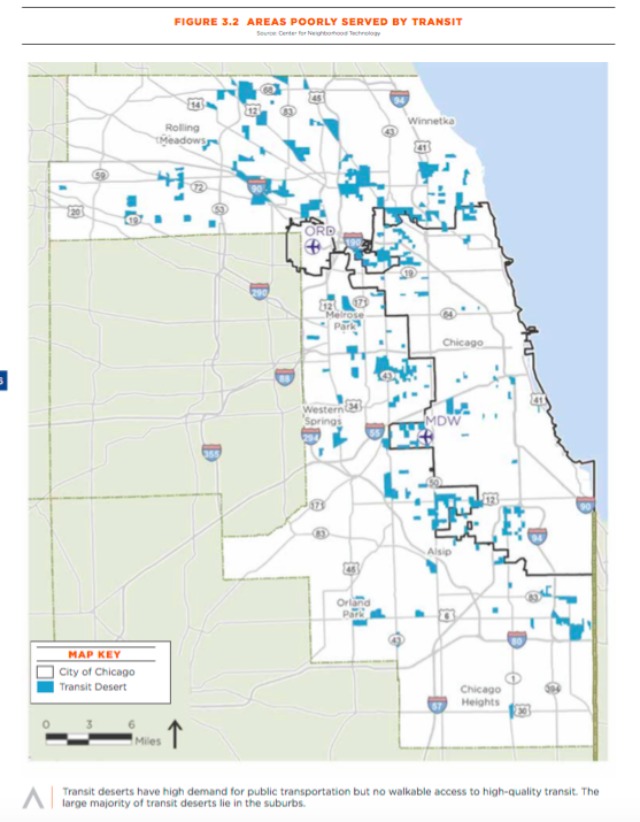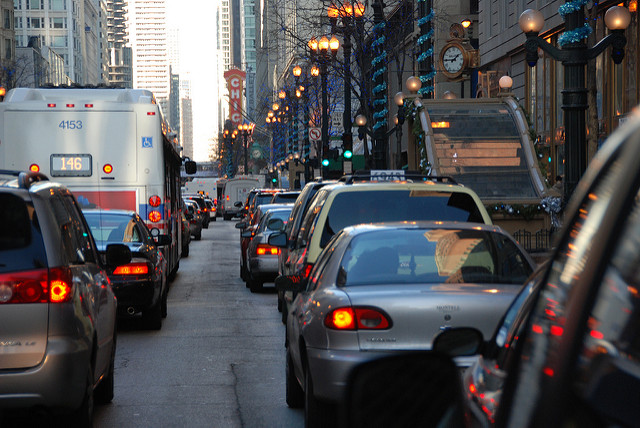The County Just Unveiled Its First Long-Term Transportation Plan In 76 Years
By Gwendolyn Purdom in News on Jul 13, 2016 9:02PM
Cook County's highways, CTA lines, railroads and sidewalks support somewhere around 20 million trips a day, and yet there hasn't been a comprehensive long-term transportation plan for the county in more than seven decades.
That changed Wednesday when the final Connecting Cook County report, two years in the making, went public. The 80-page document, unveiled by county board president Toni Preckwinkle, advocates for promoting equal access to transportation, increasing investments in transportation, maintaining and updating existing infrastructure, helping the region hold onto its role as "America's Freight Capital," and prioritizing car-free transit, among other strategies.
"For too long, Cook County sat back while others made decisions affecting our residents and businesses," Preckwinkle said in the report's introduction. "It’s time Cook County not only had a seat at the table, but also played a leadership role in creating a modern transportation system that meets changing consumer needs and responds to the demands of a twenty-first century economy."
The plan, which incorporated the goals of numerous transportation agencies and is the first such document produced here since 1940, is meant to guide the county in its transportation decisions for at least the next 25 years. Its release also comes as the county prepares to implement an additional $45 million for transportation projects per year starting in 2017, taking the county's total to $65 million—a step in the right direction, but a pretty small fraction of total transportation funding needs (In 2014, communities within Cook County spent $1.2 billion on transportation). Those added dollars came from the county's 2015 decision to stop using motor fuel tax funds for other projects.

A chart of transit deserts in the Chicago region from Connecting Cook County report
Looking ahead, the county intends to address problem areas such as "transit deserts" (areas like the south suburbs with high transit demand and few, if any, transit options), according to the report, and prepare for developments that could alter the transportation landscape such as new technologies (there are more than 2 million Uber trips in the Chicago area a month and self-driving cars are, apparently, on their way), job growth, and shifting demographics (the over-65 population is estimated to grow by 66 percent by 2040).

A graph of local transportation needs from Connecting Cook County report
"The recommendations in Connecting Cook County have the potential to improve transit, increase transportation choices, facilitate business expansion, better link people with jobs, spur redevelopment in areas that have declined, and strengthen key industry sectors and employment centers by redirecting where and how Cook County improves its transportation infrastructure," the report concludes. "The plan’s success will be measured by how well implementation addresses the challenges and moves toward the vision."
Read the full Connecting Cook County report here.
